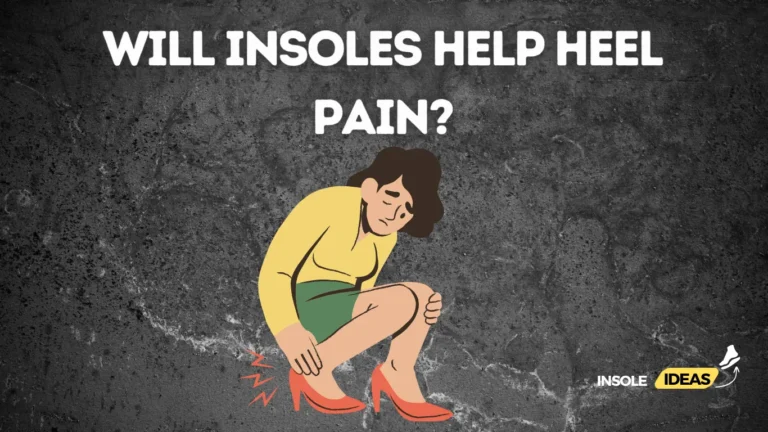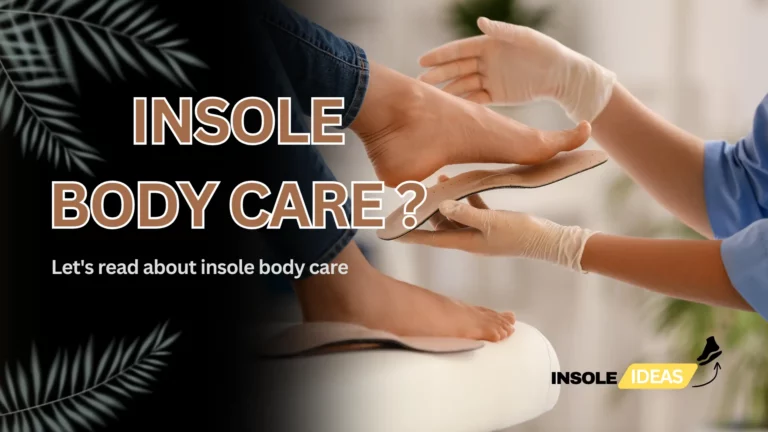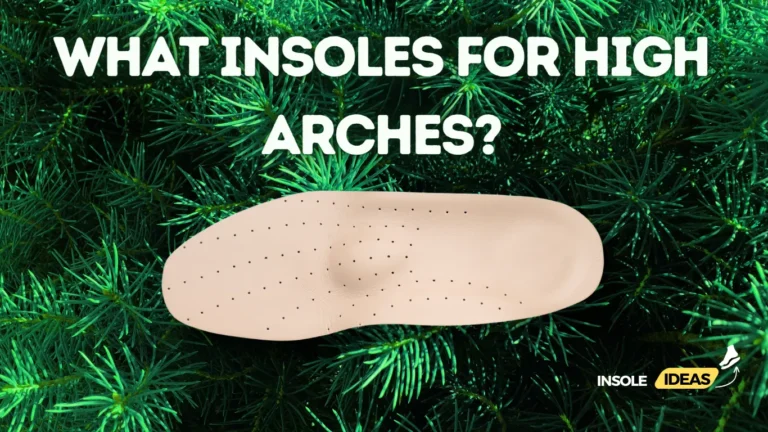How to insole shoes?
How to Insole Shoes: A Comprehensive Guide
Importance of Proper Shoe Insoles
Proper shoe insoles play a pivotal role in maintaining foot health and overall well-being. They provide crucial support to the feet, acting as a foundation for the entire body. The importance of using the right insoles cannot be overstated, as they contribute to better posture, balance, and alleviate various foot-related issues.
When shoes lack adequate support, the arches of the feet may collapse, leading to discomfort and pain. Proper insoles help distribute the body weight evenly across the feet, preventing undue stress on specific areas. Thus, there is a decreased chance of ailments like plantar fasciitis, shin splints, and even back discomfort.
Purchasing high-quality insoles is especially important for people who work out frequently since exercise increases the force applied to the foot. The correct insoles may improve performance, reduce tiredness, and improve general foot health for anybody leading an active lifestyle or who is an athlete.
Benefits of Using Insoles in Shoes
Using insoles in shoes provides a range of benefits that extend beyond mere comfort. One notable advantage is the improvement of foot biomechanics. Insoles help correct irregularities in the feet, providing necessary support to arches and ensuring proper alignment. This might be especially helpful for people who have high arches or flat feet.
Additionally, insoles contribute to shock absorption, reducing the impact of each step on the feet. This is crucial for preventing injuries, especially for those who spend long hours on their feet or participate in high-impact activities. The shock-absorbing properties of insoles also protect the joints, such as the knees and hips, from excessive stress.
Insoles can also enhance the longevity of shoes by minimizing wear and tear. They act as a barrier between the foot and the shoe, absorbing moisture and preventing the development of odors. Furthermore, using insoles tailored to specific foot conditions can aid in the management of various issues, including overpronation or supination.
Types of Insoles
Arch Support Insoles
The purpose of arch support insoles is to provide the feet’s natural arches more support. They are helpful for those with flat feet or high arches because they assist transfer weight evenly and lessen strain on the arch. These insoles promote proper alignment, preventing issues such as plantar fasciitis and arch-related discomfort.
Cushioning Insoles
Cushioning insoles focus on providing extra padding and shock absorption. They are perfect for persons who spend lengthy time standing or walking on rough surfaces. These insoles reduce the impact on the feet, offering a more comfortable experience and minimizing the risk of conditions like shin splints and joint pain.
Orthotic Insoles
Orthotic insoles are made expressly to correct abnormalities in the anatomy of the foot and biomechanical problems. They can help correct problems like overpronation or supination, providing stability and alignment. Orthotic insoles are often recommended for individuals with chronic foot conditions or those seeking enhanced support for everyday activities.
Custom-Made Insoles
Custom-made insoles are crafted to meet the unique contours of an individual’s feet. They are typically recommended for those with specific foot conditions or structural abnormalities. These insoles offer a personalized and precise fit, ensuring optimal support and comfort. Custom-made insoles are often prescribed by healthcare professionals for therapeutic purposes.
When to Use Insoles
Foot Pain and Discomfort
Using insoles is particularly beneficial when experiencing foot pain and discomfort. Whether the pain is caused by plantar fasciitis, heel spurs, or general fatigue, insoles can provide relief by offering additional support and cushioning. They are an effective non-invasive solution for managing and preventing various foot-related ailments.
Flat Feet or High Arches
Extra support is frequently necessary for those with flat feet or high arches to maintain good foot alignment. Insoles designed for these conditions can help distribute weight evenly, reduce strain on specific areas, and mitigate the risk of developing associated problems. Using insoles tailored to foot arch type is crucial for promoting comfort and preventing long-term issues.
Standing or Walking for Long Periods
The effects on feet might be severe for people who stand or walk for long periods of time. Insoles with adequate cushioning and shock absorption capabilities become essential in such scenarios. These insoles provide an added layer of protection, minimizing fatigue and discomfort associated with prolonged weight-bearing activities.
Choosing the Right Insoles
Foot Arch Type
Selecting insoles based on foot arch type is crucial for ensuring proper support. Individuals with flat feet may benefit from insoles with arch support, while those with high arches may require additional cushioning. Understanding one’s foot arch type is a fundamental step in choosing the right insoles to address specific biomechanical needs.
Shoe Size Compatibility
Insoles should complement the size of the shoes they are intended for. Ill-fitting insoles can cause discomfort and may even contribute to foot problems. It is essential to choose insoles that match the size of the shoes, ensuring a proper fit and functionality. In some cases, trimming insoles to fit precisely may be necessary.
Material Preferences
Insoles come in various materials, each offering unique benefits. Common materials include foam, gel, and memory foam. The choice of material depends on individual preferences and specific foot conditions. For example, gel insoles provide excellent shock absorption, while memory foam insoles conform to the contours of the feet for a customized fit.
Specific Foot Conditions
Insoles designed to treat certain foot disorders, such plantar fasciitis or bunions, may be necessary for certain people. Orthotic insoles or custom-made insoles prescribed by healthcare professionals can provide targeted support and alleviate symptoms associated with various foot conditions. Choosing insoles based on specific needs ensures optimal effectiveness.
How to Insert Insoles
Removing Existing Insoles (If Applicable)
Before inserting new insoles, it’s essential to remove any existing insoles from the shoes. By doing this, you can make sure the new insoles fit correctly and don’t add extra bulk. Carefully take out the old insoles and clean the shoe interiors if needed, preparing them for the placement of the new insoles.
Placing Insoles Correctly
Correct placement of insoles is crucial for their effectiveness. Align the heel of the insole with the back of the shoe and ensure that it lies flat and covers the entire footbed. Some insoles come with guidelines or markings to assist with proper placement. Adjust as needed to achieve a comfortable and secure fit.
Ensuring a Snug Fit
Once the insoles are placed, ensure that they fit snugly within the shoes. Insoles should not bunch up or create discomfort. If the insoles are too large, trim them to the appropriate size using scissors. It’s essential to strike a balance between a snug fit and allowing enough room for the toes to move comfortably within the shoes.
Properly inserting insoles enhances their effectiveness in providing support, comfort, and protection for the feet. Taking the time to follow these steps ensures that the benefits of the insoles are maximized, contributing to an improved overall footwear experience.
VI. Maintaining and Cleaning Insoles
A. Regular Cleaning Routine
Maintaining a regular cleaning routine for insoles is essential to ensure hygiene and prolong their lifespan. Start by taking out the insoles from the shoes and giving any loose dirt or debris a gentle brush off. For surface-level cleaning, a mild soap or detergent mixed with warm water can be used. Use a soft brush or cloth to clean the insoles thoroughly.
Steer clear of abrasive cleansers and strong chemicals since they can harm the insoles’ substance. Once cleaned, allow the insoles to air dry completely before placing them back into the shoes. This routine not only helps in preventing unpleasant odors but also ensures that the insoles continue to provide optimal support and comfort.
B. Air-Drying vs. Machine Drying
When it comes to drying insoles, the preferred method is air-drying. After cleaning, place the insoles in a well-ventilated area, allowing them to dry naturally. Keep them out of strong heat sources and direct sunshine since they can cause the materials to deteriorate. Air-drying is gentle and helps maintain the structural integrity of the insoles.
Using a machine to dry insoles is not recommendedbecause the materials may be harmed and their form may be changed by the extreme heat and mechanical activity. Machine drying may lead to shrinkage or warping, compromising the effectiveness of the insoles. When it comes to drying, patience is essential. Giving the insoles enough time guarantees that they are ready for usage without sacrificing their quality.
C. Replacing Insoles When Necessary
Knowing when to replace insoles is crucial for maintaining foot health and overall comfort. Signs that it’s time to replace insoles include visible wear and tear, loss of cushioning, and a decrease in support. If the insoles no longer provide the same level of comfort or fail to address foot-related issues, it’s advisable to replace them.
VII. Common Insole Mistakes to Avoid
A. Using the Wrong Type of Insole
One common mistake is using insoles that are not suitable for the specific foot condition or footwear. For example, putting cushioning insoles on when arch support is required, or the opposite, can cause pain and make pre-existing issues worse. It’s essential to match the type of insole with individual foot needs and the intended purpose to maximize their benefits.
B. Neglecting Proper Sizing
Neglecting proper sizing is a prevalent mistake that can impact the effectiveness of insoles. Insoles that are too large may cause discomfort and compromise the fit of the shoes, while insoles that are too small may not provide adequate support. Always choose insoles that match the size of the shoes, and if necessary, trim them to ensure a proper fit.
C. Ignoring Signs of Wear and Tear
Ignoring signs of wear and tear on insoles is a mistake that can lead to diminished support and comfort. Regularly inspect insoles for visible damage, such as cracks, worn-out areas, or flattened cushioning. If any of these signs are present, it’s crucial to replace the insoles promptly to prevent adverse effects on foot health.
VIII. Additional Tips for Comfortable Footwear
A. Choosing the Right Shoes
Selecting the right shoes is fundamental for overall foot comfort. Ensure that the shoes provide adequate support, proper arch alignment, and sufficient room for toe movement. Consider the intended use of the shoes, whether for daily activities, sports, or specialized needs. Well-fitted shoes complement the benefits of insoles and contribute to a comfortable footwear experience.
B. Rotating Insoles for Extended Shoe Life
Rotating insoles between multiple pairs of shoes can extend their lifespan and maintain their effectiveness. This practice distributes wear more evenly, preventing excessive strain on a single pair of insoles. It also allows time for insoles to air out between uses, reducing moisture buildup and the risk of odor. Regularly rotating insoles is a simple yet effective way to maximize their durability.
C. Regular Foot Exercises for Added Support
In addition to using insoles, incorporating regular foot exercises into a daily routine can provide added support and strengthen the muscles of the feet. Exercises such as toe curls, ankle rolls, and arch stretches help maintain flexibility, improve circulation, and enhance overall foot health. Combining insoles with targeted exercises contributes to a comprehensive approach to foot care and comfort
IX. Conclusion
A. Recap of Key Points
In conclusion, understanding how to insole shoes is crucial for maintaining optimal foot health and overall well-being. Throughout this guide, we’ve explored various aspects, from the importance of proper shoe insoles to choosing the right type for specific needs. Let’s recap the key points covered in the preceding sections.
We began by emphasizing the significance of proper shoe insoles in providing essential support to the feet. The benefits of using insoles extend beyond mere comfort, contributing to improved posture, balance, and the prevention of various foot-related issues. Understanding the many kinds of insoles—such as cushioning, orthotic, arch support, and custom-made—enables people to make well-informed decisions depending on their specific requirements.
Knowing when to use insoles, such as in cases of foot pain, flat feet, or long periods of standing or walking, helps address specific concerns and enhance overall comfort. Choosing the right insoles involves considerations like foot arch type, shoe size compatibility, material preferences, and specific foot conditions.
The proper insertion of insoles is a critical step, involving the removal of existing insoles (if applicable), correct placement, and ensuring a snug fit. Additionally, maintaining and cleaning insoles through a regular cleaning routine, air-drying, and timely replacement are essential practices to extend their lifespan and preserve their effectiveness.
B. Encouragement to Prioritize Foot Health
As we conclude, it’s important to reiterate the significance of prioritizing foot health. Our feet are essential to our everyday activities and support the weight of our body. Investing in proper insoles and taking the time to care for our feet can have a lasting impact on our overall well-being.
Encouraging a proactive approach to foot health involves not only using the right insoles but also being attentive to signs of discomfort, choosing suitable footwear, and incorporating regular foot exercises into our routines. Acknowledging and fixing common insole errors—like selecting the incorrect kind or skipping correct sizing—enables people to make decisions that improve the health of their feet.
In conclusion, by incorporating the insights shared in this guide into our footwear choices and daily practices, we can enhance the comfort, support, and longevity of our feet. Prioritizing foot health is a proactive step toward a more active, pain-free, and enjoyable lifestyle. Remember, healthy feet contribute to a healthier and more comfortable life overall.





